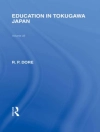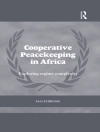This book provides a unique view of Astronomy in Culture, Archaeoastronomy and Ethnoastronomy involving ancient civilizations in Latin America, emphasizing scientific and cultural knowledge combined with historical, cognitive, archaeological and anthropological aspects. Topics covered in the book include different associations of ancient civilizations with the stars and planets, whether in farming, architecture, social organization, beliefs, myths, religion, metric systems, calendar construction, shrines, and variations in astronomical research methods based on the types of material evidence available. Special attention is paid to the war cycles associated with observed celestial events, day-counting calendars, including movements in the sky and written evidences from codices, and in particular the Andean and Inca traditions of astronomically associated shrines, caves and celestial alignments of monuments and temples.
Contents:
- Pacha: An Andean Space-Time Construct, Energized by the Swaps of the Dual Concepts of Urin and Janan (Eusebio Manga Quispe)
- Astronomies of the European Immigrants and Their Descendants in the Southern Argentinean Chaco Region (Armando Mudrik)
- Maya Skyscape Iconology (Christopher Layser)
- Toward an Understanding: Exploring the American Southwest Star Connection to Mesoamerica (Mark Raney)
- Heaven on Earth: Inter-Ethnic Dialogues with Sky Entities (Alejandro Martín López)
- Caral, the Moon, and the River in the Preceramic Andes (César González-García and Juan A Belmonte)
- Historical Sources and Astronomical Constellations in the Northwest Amazon (Walmir Thomazi Cardoso)
- Group E of Uaxactún, Petén, Guatemala: Archaeoastronomical Hypotheses and Archeological Reality (Ivan Šprajc)
- Inka Astronomy South of the Tawantinsuyu (Gustavo Corrado and Sixto Giménez Benítez)
- Honduras Between Archaeoastronomy and Ethnoastronomy: Copán, Rock Art, and Tolupán Cosmovision (Javier Mejuto)
- Asterisms and Time Cycles: Perspectives from Central West Chaco (Cecilia P Gómez)
- The Plate of the Andean Worldview and the Stars, Heavenly Bodies, and Natural Phenomena (Eusebio Manga Quispe)
- A Revision of Some Lunar Glyphs of the Lunar Series at Quirigua (Stanislaw Iwaniszewski)
- The Cultural Legacy of the Incas: The Road toward a Genetic Epistemological Cognitive Archeoastronomy (Mônica Baptista Pereira Estrázulas and Milton Rojas Gamarra)
- Chankillo Archaeoastronomical Complex (Steven Gullberg)
Readership: Researchers or the general public interested in ancient astronomy and civilizations.
Key Features:
- The richness of its thematic approach, emphasizing the scientific and cultural knowledge of past civilizations and their relationship with historical, cognitive, archaeological and anthropological aspects
- The associations of this approach, emphasizing the relationship between ancient civilizations with the stars and planets, whether in agriculture, architecture, social organization, beliefs, myths, religion, metric systems, construction of calendars, sanctuaries and variations in astronomical research methods based on different types of material evidence available
- In particular, the emphasis on war cycles associated with observed celestial events, day-count calendars including movements in the sky and written evidence from codices, the Andean and Inca traditions of astronomically associated sanctuaries, caves and celestial alignments of monuments and temples
- The thematic experience of the authors, of excellence












